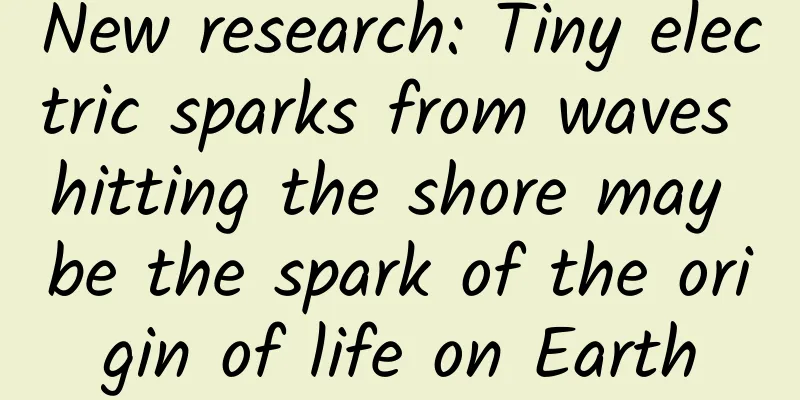Carbon, how to "leverage" the wonderful world?

|
Carbon, a seemingly ordinary element, is one of the most magical things on earth. From graphite in pencil leads to dazzling diamonds, from single-layer graphene to tiny carbon nanotubes, carbon materials are changing our lives and shaping our future with their unique properties and varied structures. Let us walk into the wonderful world of carbon science, explore the differences between different carbon materials, and understand the important role of carbon in our lives. Carbon is a non-metallic element that ranks sixth in the periodic table. Its chemical symbol is C. Compared with other elements, it is unique in its diverse chemical bonding methods. Carbon atoms can be combined with other carbon atoms through single bonds, double bonds, or triple bonds to form chain, ring, or network structures. This diversity allows carbon to exist in a single substance with multifaceted properties, forming a variety of allotropes, such as graphite, diamond, fullerene, carbon nanotubes, and graphene. Graphite: From pencil lead to the "black gold" of high-tech materials Graphite is a common carbon material, known as "black gold" for its unique properties and wide range of applications. Its name comes from the Greek word "graphein", meaning "to write", and was named by German mineralogist Abraham Gottlob Werner in 1789, which is closely related to its most common use - pencil lead. The molecular structure of graphite is the key to its unique properties. It is made up of layers of carbon atoms, each of which is a hexagonal network (similar to a honeycomb). The layers are bound together by weak van der Waals forces, so the graphite layers can slide easily. This structure gives graphite its softness, electrical conductivity and high temperature resistance, and is widely used in many fields. In the earliest times, people mixed graphite with clay to make pencil leads, and writing was its most common use. Its unique layered structure makes it an efficient solid lubricant, which performs particularly well in high temperature or high pressure environments. With the development of science and technology, graphite has become the main component of negative electrode materials for lithium-ion batteries due to its conductivity and stability. Due to its high temperature resistance, people have made graphite crucibles for smelting metals and graphite electrodes for steelmaking in electric arc furnaces. In today's era, high-purity graphite is used as a moderator in nuclear reactors to help control the speed of nuclear reactions. In addition, people have combined graphite with resins to make high-strength, lightweight composite materials for use in the aerospace and automotive industries. Molecular structure of graphite Diamond: The Hardest Substance in Nature Diamond, also known as diamond, is the hardest material in nature and one of the most popular gemstones. Its name and properties are full of legends. The word "diamond" comes from the Greek word "adamas", which means "unconquerable" and "invincible", reflecting its extremely high hardness and durability. The key to the extremely high hardness of diamond is its unique molecular structure. Each carbon atom is connected to the four surrounding carbon atoms through strong covalent bonds to form a three-dimensional tetrahedral network structure. Because of this structure, it has extremely high hardness, high thermal conductivity, and high refractive index and strong dispersion optical properties. This optical property is also the reason why diamonds are dazzling. Due to its unique properties, diamonds are widely used in many fields. In the field of jewelry, diamonds are widely used to make high-end jewelry such as rings and necklaces because of their beauty and rarity. In the industrial field, the ultra-high hardness of diamonds makes them an ideal tool for cutting, grinding and polishing hard materials such as glass, ceramics and metals. In the field of electronic equipment, the high thermal conductivity and insulation of diamonds make them an ideal material for high-performance electronic devices such as heat sinks and semiconductors. In the field of scientific research, diamond anvils are used in high-pressure experiments to simulate conditions inside the earth or in other extreme environments. In the medical field, diamond coatings are used on surgical knives and dental drills to improve the durability and precision of the tools. Diamond appearance and molecular structure Fullerene: The "football star" of the carbon family Fullerene is the third allotrope of carbon discovered. It is a star in the carbon material family and has attracted much attention for its unique molecular structure and diverse application potential. Its name and shape are closely related to football, and it is known as the "football of the nano world". The name of fullerene comes from the American architect Buckminster Fuller, whose geodesic dome structure is very similar to the molecular shape of fullerene. In 1985, scientists Harry Kroto, Richard Smalley and Robert Cole first discovered fullerene (C₆₀) in the laboratory and won the 1996 Nobel Prize in Chemistry for it. The molecular structure of fullerene is the core of its unique properties. The most common fullerene is C₆₀, which is composed of 60 carbon atoms, forming a spherical structure composed of 20 hexagons and 12 pentagons, which is shaped like a football. This structure gives it symmetry, stability and cavity structure, showing great application potential in many fields. In the field of materials science, fullerenes can be used to manufacture high-strength, lightweight composite materials for use in the aerospace and automotive industries. In the field of electronic equipment, fullerenes have good conductivity and semiconductor properties and are used to manufacture organic solar cells, field-effect transistors, and sensors. In the medical field, the cavity structure of fullerenes can be used for drug delivery, precisely delivering drugs to the site of the lesion. In addition, fullerenes also have antioxidant properties and are being studied for anti-aging and cancer treatment. In chemical reactions, fullerenes can be used as catalyst carriers to improve the efficiency and selectivity of chemical reactions. In the field of superconducting materials, fullerenes doped with certain metals exhibit superconductivity at low temperatures, providing a new direction for the research of superconducting materials. Molecular structure of fullerene Carbon nanotubes: the "super fiber" of the nano world Carbon nanotubes are a new star in the carbon material family and are known as the "super fiber of the nano world". Its discovery has brought revolutionary breakthroughs in materials science and nanotechnology, and it has attracted much attention due to its unique structure and excellent performance. The name of carbon nanotubes directly reflects their structural and size characteristics. "Carbon" refers to the fact that they are composed of carbon atoms, "nano" means that their size is at the nanometer level (1 nanometer = 10⁻⁹ meters), and "tube" describes their cylindrical hollow structure. In 1991, Japanese scientist Sumio Iijima observed carbon nanotubes for the first time under a high-resolution electron microscope. This discovery quickly triggered a research boom in the global scientific community. The molecular structure of carbon nanotubes is the basis of their excellent performance. It is made of single or multiple layers of graphene sheets curled up to form a hollow cylinder. According to the number of layers, carbon nanotubes can be divided into single-walled carbon nanotubes and multi-walled carbon nanotubes. Single-walled carbon nanotubes are made of single-layer graphene curled up, and the diameter is usually 0.4-2 nanometers. Multi-walled carbon nanotubes are made of multiple layers of graphene curled concentrically, and the diameter can reach tens of nanometers. The unique structure of carbon nanotubes gives them low density, high strength, high electrical conductivity and high thermal conductivity, showing great application potential in many fields. In the field of electronic devices, carbon nanotubes can be used to manufacture high-performance transistors, flexible displays and quantum computers, promoting the miniaturization and efficiency of electronic technology. In the field of composite materials, adding carbon nanotubes to plastics, metals or ceramics can significantly improve the strength, conductivity and heat resistance of the materials, and are widely used in aerospace, automobile manufacturing and sports equipment. In the field of energy storage, carbon nanotubes are ideal electrode materials for supercapacitors and lithium-ion batteries, which can improve energy density and charging and discharging speed. In the field of sensors, carbon nanotubes are extremely sensitive to small changes (such as pressure, temperature, and chemicals) and are used to manufacture high-precision sensors. In the biomedical field, carbon nanotubes can be used in drug delivery systems to accurately deliver drugs to the lesion site. In addition, they are also being studied for tissue engineering and cancer treatment. In the field of environmental protection, carbon nanotubes can be used to filter pollutants in water and air, and are an efficient environmental purification material. Molecular structure of carbon nanotubes Graphene: The "miracle star" of two-dimensional materials Graphene is one of the hottest materials in the scientific community in recent years and is known as the "miracle star in the material world". Its discovery has not only brought revolutionary breakthroughs to physics and materials science, but has also attracted much attention for its unique properties and wide application potential. The name of graphene consists of two parts: "graphite" and "ene". "Graphite" refers to its source - graphite is made up of multiple layers of graphene stacked together; "ene" refers to its two-dimensional structure of a single layer of carbon atoms. In 2004, British scientists Andre Geim and Konstantin Novoselov successfully separated a single layer of graphene for the first time through a simple "tape stripping method", and won the 2010 Nobel Prize in Physics for this. The molecular structure of graphene is the core of its outstanding performance. It is composed of a single layer of carbon atoms arranged in a hexagonal honeycomb to form a two-dimensional planar structure. This structure is only one carbon atom thick, making it the thinnest material known to mankind. Despite its thinness, graphene's carbon-carbon bond is one of the strongest chemical bonds in nature, making it one of the strongest materials (200 times stronger than steel). In addition, it has high electrical conductivity, high thermal conductivity and transparency, showing great application potential in many fields. In the field of electronic devices, graphene can be used to manufacture ultra-thin, flexible display screens, high-speed transistors and high-performance sensors, promoting the miniaturization and efficiency of electronic technology. In the field of energy storage, graphene is an ideal electrode material for supercapacitors and lithium-ion batteries, which can improve energy density and charging and discharging speed. In the field of composite materials, adding graphene to plastics, metals or ceramics can significantly improve the strength, conductivity and heat resistance of the materials, and is widely used in aerospace, automobile manufacturing and sports equipment. In the biomedical field, graphene can be used to manufacture biosensors, drug delivery systems and tissue engineering scaffolds, bringing revolutionary changes to the medical field. In the field of environmental protection, graphene can be used to filter pollutants in water and air, and is an efficient environmental purification material. In the field of quantum computing, the two-dimensional electronic properties of graphene make it an ideal material for quantum computers, which is expected to promote the development of next-generation computing technology. Graphene molecular structure Carbon is changing our lives. In the future, with the further research and application of carbon materials, we will usher in a more efficient, intelligent and sustainable world. Carbon, this ordinary element, is writing an extraordinary future. |
<<: The first pee in the morning may be your body's cry for help! Don't ignore these signals
>>: It's a fake volcano that spits mud!
Recommend
The reason why iPhone does not support Flash: a wise move by Steve Jobs
The iPhone has many special settings, and not sup...
I spent thousands of dollars on a 5G phone, but why is the Internet speed still so slow? The answer is out
I believe many people have encountered this probl...
The latest practical course on making money with Douyin app, no basic knowledge, practical + theory, some people have already made 20,000+ a day
The latest practical course on making money with ...
Community operation: analysis of how to run an active community!
In today's world where everyone is addicted t...
Another fitness move is going viral! A man's hemorrhoids ruptured after trying it! Doctor: Not suitable for everyone...
In the movie, Ip Man is a master of martial arts,...
Having gone through nine years of compulsory education, you can also call him teacher!
The Mid-Autumn Festival coincides with Teachers&#...
Qatar World Cup: Is installing air conditioners outdoors just a way of being rich? It's not that simple!
The quadrennial World Cup is being held in the Mi...
Will Sirius explode as a supernova? What will happen if it explodes? How much impact will it have on humans?
This title may look a bit scary, but please rest ...
Let’s talk about how to place advertisements?
Baidu has been overhauling its business promotion...
How much does it cost to join the Shangrao Timber Mini Program? What is the price for joining Shangrao Timber Mini Program?
How much does it cost to join a wood mini program...
Analysis and solutions for common rejection reasons of financial apps
The APP review here refers to the AppStore review...
30 high-quality information flow cases in 14 industries, learning them will instantly improve the effect by 80%!
Friends often ask what constitutes a high-quality...
Confession of systemic lupus erythematosus
I won't beat around the bush in my opening re...
How to create a title with 10w+ views!
British writer Malcolm Gladwell mentioned an idea...
Why does the Samsung Note 7 battery explode?
Recently, there have been frequent reports of Sam...









